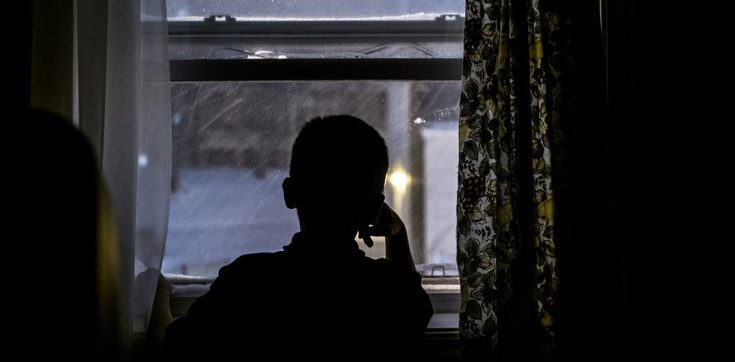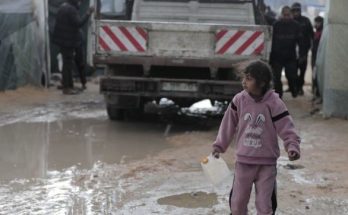#Child, #Poverty, #RichCountries
IBNS-CMEDIA: A sharp rise in child poverty was registered across 40 of the world’s richest countries between 2014 and 2021, according to a new report published on Wednesday by the UN Children’s Fund’s global research centre, Innocenti.
The new findings from the UNICEF research wing focus on Member States of the Organization of Economic Cooperation and Development (OECD) and the European Union (EU).
Analysing child support policies among the group of developed economies, the report finds that despite an overall decrease in poverty of nearly eight per cent over the seven year period, there were still more than 69 million children living in households earning less than 60 per cent of the average national income.
Among those faring best in tackling child poverty are Poland and Slovenia, followed by Latvia and the Republic of Korea. In contrast, some of the richest countries in the report are lagging behind.
“The impacts of poverty on children are both persistent and damaging,” said Innocenti’s Director, Bo Viktor Nylund.
As he explained, for most children this means that they may grow up without enough nutritious food, clothes, school supplies, or a warm place to call home. It prevents the fulfilment of rights and can lead to poor physical and mental health.”
Lifetime of consequences
The consequences of poverty can last a lifetime, the report’s authors warn.
Children who experience poverty have less chance of completing school and hence earn lower wages as adults. In some countries, a person born in a deprived area is likely to live eight to nine years less than a person born in a wealthy area, the report reveals.
It also highlights huge inequalities. Across 38 countries with available data, children living in a single parent family are over three times as likely to be living in poverty as other children. Children with disabilities or from minority ethnic/racial backgrounds are also at higher-than-average risk.
According to the findings, 2012 to 2019 saw largely stable economic growth among the countries surveyed, presenting an opportunity to recover from the impacts of the 2008-10 recession.
Surprising differences
However, while several countries reduced child poverty, some of the wealthiest saw the biggest reversals.
The report also shows that countries with similar levels of national income, such as Slovenia and Spain, experienced stark differences in child poverty rates – 10 per cent and 28 per cent respectively.
Children’s living conditions can be improved regardless of a country’s wealth, the report notes. For example, Poland, Slovenia, Latvia, and Lithuania – not among the richest OECD and EU countries – have achieved important reductions in child poverty: minus 38 per cent in Poland and minus 31 per cent in the other countries.
Meanwhile, five higher income countries – the United Kingdom (+20 per cent) and France, Iceland, Norway, and Switzerland (all around +10 per cent) – saw the greatest increases in the number of children living in households experiencing financial hardship since 2014.
Cash benefits go a long way
To eradicate child poverty, the study authors explain, governments and stakeholders should urgently expand social protection for children, including child and family benefits to supplement families’ household income.
The also need to ensure all children have access to quality basic services, like childcare and free education; create employment opportunities with adequate pay and family-friendly policies and adapt measures to the specific needs of minority groups and single-headed households.
“Cash benefits have an immediate effect in alleviating poverty. Decisionmakers can support households by prioritizing and increasing expenditure on child and family benefits,” added Nylund, inviting governments to examine the policies that have proved successful over time.
A true tale of Challenges, Resillience and Courage in Journey through Captivity
In her gripping book, Journey Through Captivity, author Sheela Sheth recounts the gripping tale of abduction during the Ethiopian Famine of 1983. The narrative unfolds over 49 days of captivity, revealing
reflections, reactions and revelations that transform lives of displaced refugees. It vividly portrays Ethiopia’s evolution across three regimes while exploring the intricate dynamics between captors and captives in the beautiful yet mysterious landscape. The book delves into the challenges faced by refugees, the coping strategy in hostage situations, and the resilience of human spirit in the face of adversity.
Q. The setting of the book is unique. How did you choose the backdrop for
your story, and why is it significant to the narrative?
A. Selecting the setting was influenced by a real life event which took place
in Korem in 1983 during the famine in Ethiopia. It is a journey of the main
character in the story who was held captive for 49 days by a rebel group and
taken as a hostage through the Tigray terrain. The backdrop of the story is the
desert terrain through which he travelled facing the challenges and life
threatening moments.
Q. Your character seems quite intriguing. Can you tell us about the
protagonist and any challenges they face in the story?
A. The main character of the book is my husband Mahendra whose life was
exciting and rewarding, worth the exhaustion and uncertainties. It is a
compelling story of reflections, reactions and revelations of a hostage in the
midst of famine and war in Ethiopia. Journey through captivity is a reflection
of the character’s inner self, his confidence laced with positivity weaving along
the rugged contours of a fractured coastline. Taking one day at a time and
marshalling medical services by becoming the official doctor for the group was
an indication of resilience in the face of sensory overload.
At one end, is the quiet sophistication of perfectly manicured meadows and
the other end is the empty quarters of an arid desert landscape. The
flashbacks were a proof of life lived but also a sign of social withdrawal, frozen
fright and a survival strategy.
Q. Readers often connect with authors on a personal level. How much of
yourself do you see in the characters or the storyline?
A.There is a lot of me in the story as I am the spouse of the captive. Since I
am the author of the book connected closely to the situation, my social stance
was highly disturbing. Controlling my emotions, fears and uncertainty in life
became a part of my personality. It was the time when I had two little children
to take care of and I had no one to share my feelings with. I became a silent
spectator to what was going on around me and I started withdrawing myself
from social life. I am sure the readers would connect with me especially those
facing mental challenges and also those folks whose life is never without
some kind of loss.
Q. Can you give us a brief overview of what inspired you to write “Journey
through Captivity”?
A. In 2019, With Covid, the entire lifestyle changed, and we started staying
more and more indoors. I had more time on hand to organize, read and
concentrate on my personal writings. It was the time to document life and
leave a legacy behind for generations to come. Day in and day out, we were
losing dear ones to the wrath of Covid.
This was the time I felt I had to hurry up and race with time. I started preparing
an outline. I had lived through those times with my husband, so he became
my inspiration and I started this morning ritual of interviews and recorded clips
to help me formulate an outline. I started following Memoir networks and read
books to give me a trail to follow. Now I had clarity of thought and vision to
bring clips, pictures and a journal to life to write a real life story.
Q. How did you come up with the concept and what message are you hoping
to convey through it?
A. I realized visuals and pictures speak a thousand words. It would give the
reader an insight into my personal life and connect me with the readers and
open corridors of appreciation to those small town folks from where we started
our life journey.
Q. What do you think the readers will take away from “Journey through
Captivity”?
A. As we know, Memoirs are a way to reclaim the past, to build a bridge
between who we once were and who we have become and the experiences
that shaped us. Embracing the challenges and keeping calm in extreme
circumstances was a mental adjustment. It taught me the value of small
pleasures in life and to appreciate little things which are often taken for
granted. Life is a circle. The end of one journey was preparing me to embark
the beginning of the next stage in life. Positivity in life can be rewarding as one
says there is always light at the end of the tunnel.
Copies of “Journey Through Captivity” are available for purchase at Amazon
https://www.amazon.com/dp/B0CMNV94BK?ref_=pe_3052080_397514860.





